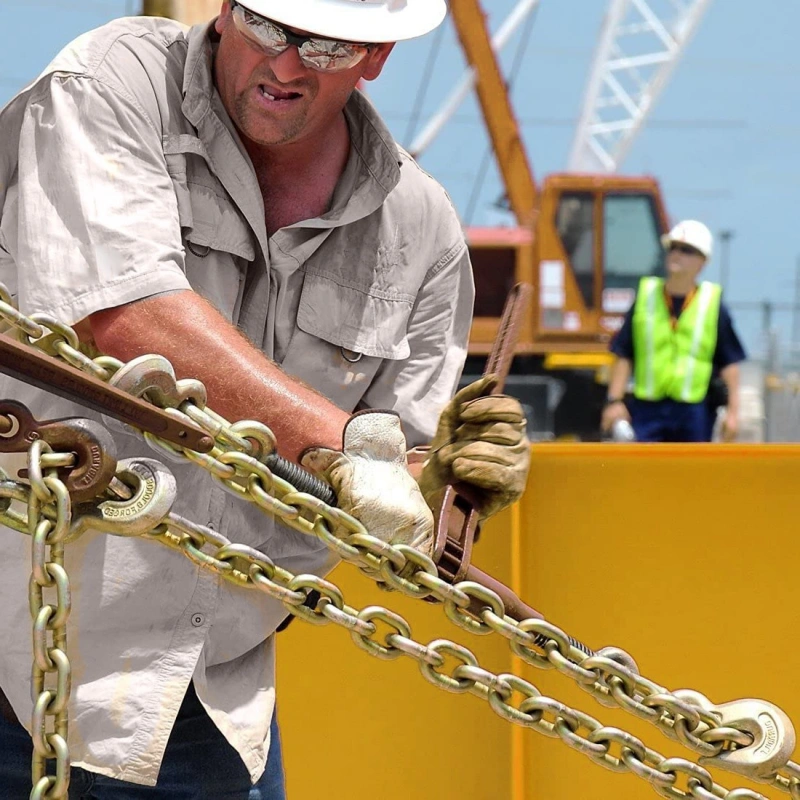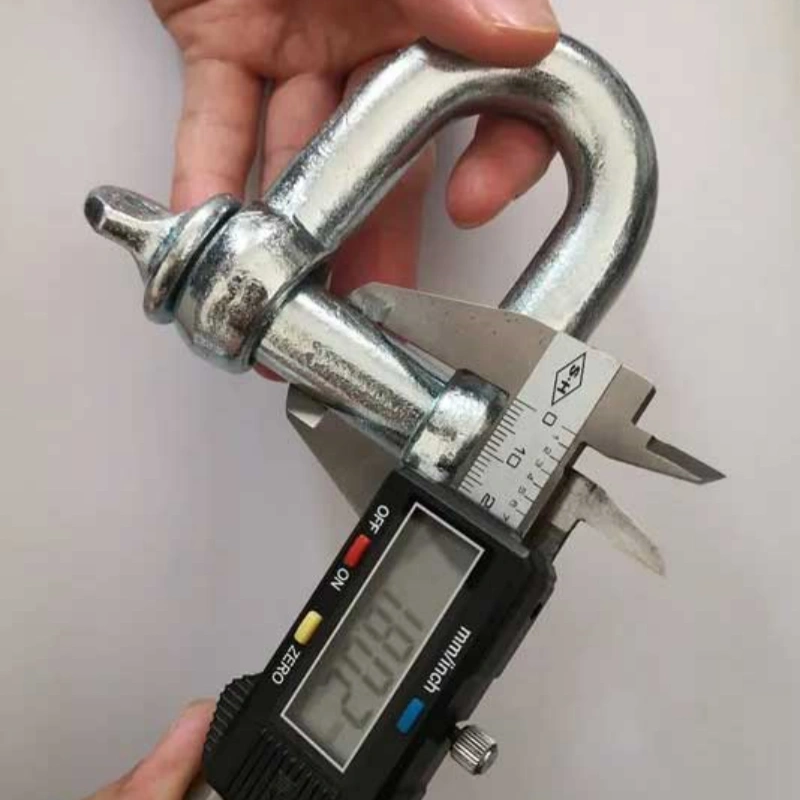You use shackles to connect, lift, or secure heavy loads with confidence. To ensure safety, it’s essential to know how to use shackles properly. Always inspect shackles before each use and follow safe handling practices to protect yourself and your equipment.
Shackles play a vital role in many industries, including marine, construction, and automotive. Powerful Machinery provides certified shackles trusted by professionals worldwide.
Application Sector | Description |
|---|---|
Marine | Crucial for safe handling of heavy loads in maritime operations. |
Construction | Fastest-growing sector due to global infrastructural developments. |
Automotive | Integrated into towing and recovery systems for off-road use. |
Industrial | Favored for versatility and safety in lifting operations. |
Key Takeaways
Always inspect shackles before each use. Look for signs of wear, corrosion, or damage to ensure safety during lifting and towing.
Select the right type of shackle based on your load and environment. Consider materials like stainless steel for corrosive settings and alloy steel for heavy-duty tasks.
Never exceed the working load limit (WLL) of a shackle. Always check the WLL marked on the shackle to prevent accidents and injuries.
Follow proper attachment techniques. Ensure the shackle is securely closed and test it with a small load before full use.
Regular maintenance is key. Clean and lubricate shackles as needed, and replace any that show signs of damage to extend their lifespan.
Shackles Overview
What Are Shackles?
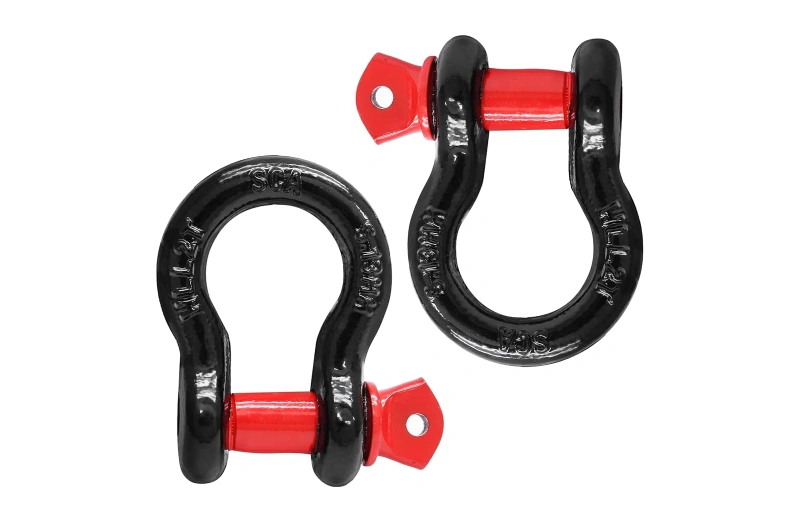
You use shackles to connect, lift, and secure loads in many different settings. Shackles are metal U-shaped components with a pin that joins the two ends. The curved part is called the crown or bow, and the ends are known as lugs.
This design lets you link parts of a rigging system, such as attaching hooks to eye bolts. Shackles play a key role in lifting and rigging operations because they create strong and reliable connections.
When you choose shackles, you need to consider the material. Manufacturers use carbon steel, alloy steel, stainless steel, galvanized steel, and powder-coated steel. Each material affects how shackles perform and how safe they are. Alloy steel gives you high strength for heavy-duty jobs.
Stainless steel resists corrosion, so it works well in marine or chemical environments. Galvanized steel is cost-effective for mild conditions. Powder-coated steel offers extra wear resistance for dynamic rigging. The right material helps you keep your operations safe and efficient.
Standard/Organization | Description |
|---|---|
OSHA | Sets workplace safety standards, including inspection requirements for shackles. |
ASME B30.26 | Covers design, construction, inspection, testing, and maintenance of shackles. |
IMO | Regulates the use of shackles in maritime operations for safety. |
ABS | Provides rules for the construction and classification of vessels, including shackles. |
Main Uses
Shackles serve many important functions in lifting, towing, and rigging. You rely on shackles for these main uses:
Shackles are essential in rigging and lifting operations.
You use shackles for towing, tie-down, hoisting, and pulling tasks.
The type of shackle you select depends on load size and working load limit.
You see shackles in construction, marine, transportation, and industrial settings. You can use shackles to lift heavy beams, secure cargo, or tow vehicles. Shackles help you complete jobs safely and efficiently, making them a must-have for any rigging setup.
Types of Shackles
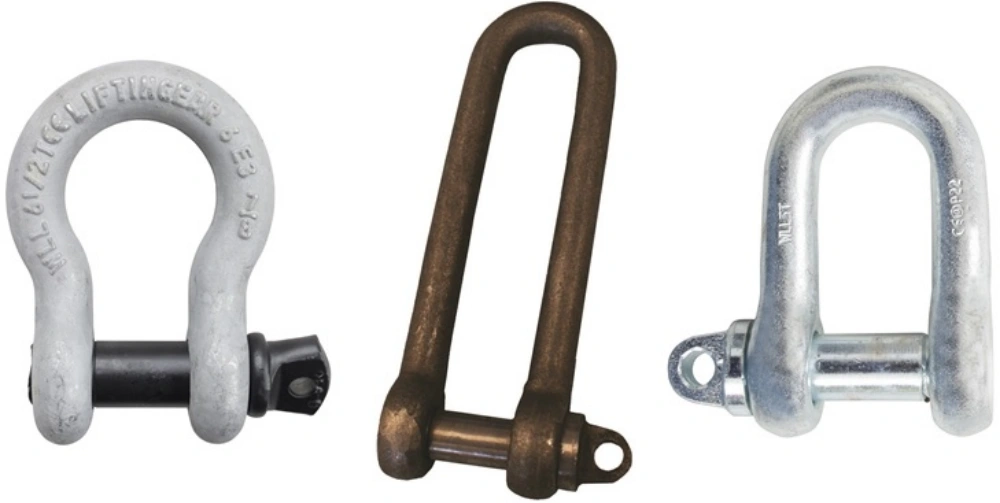
Powerful Machinery offers a wide range of shackles designed for different lifting and rigging needs. You can find stainless steel shackles, G209 shackles, and stainless steel screw pin D shackles in their product line. Each type serves a specific purpose and fits unique applications.
Tip: Always match the shackle type to your task for maximum safety and efficiency.
Powerful Machinery Stainless Steel Shackles
You use stainless steel shackles when you need strong, corrosion-resistant connections. These shackles work well in marine, industrial, and outdoor environments.
Stainless steel resists rust, so you can rely on these shackles for long-term use near water or chemicals. The smooth finish makes them easy to handle and install.
Category | Types/Materials/Applications |
|---|---|
Types | Bow shackle, D-shackle, Snap shackle, Threaded shackle |
Materials | Stainless Steel, Alloy Steel, Synthetic materials |
Bow shackles give you more space for bulky connections. D-shackles provide a compact fit for straight-line pulls.
G209 Shackle
G209 shackles stand out for their strength and versatility. You use these shackles for heavy lifting, towing, and rigging. The screw pin design lets you attach and remove them quickly. G209 shackles handle loads from several hundred kilograms up to dozens of tons.
You see the working load limit marked on each shackle, so you always know the safe capacity.
Specification | Details |
|---|---|
Working Load Limit | 1/3 to 55 metric tons |
Material | Forged, quenched, and tempered steel |
Safety Factor | 6 times the working load limit |
Stainless Steel Screw Pin D Shackles
You choose stainless steel screw pin D shackles for straight-line lifting and rigging. The screw pin makes installation fast and tool-free. These shackles resist corrosion, so you can use them in harsh environments. They are not ideal for applications with vibration, but they excel in stable lifting tasks.
Advantage | Application |
|---|---|
Easy to install and remove | Lifting and rigging |
How to Use a Soft Shackle?
Soft shackles use synthetic materials instead of metal. You get a lightweight option with strength similar to metal shackles. Soft shackles weigh less, so you can carry and handle them easily.
They also reduce the risk of injury because they do not store as much energy if they fail. You often use soft shackles for off-road recovery or boating.
Feature | Metal Shackles | Soft Shackles |
|---|---|---|
Weight | Heavier | Lighter |
Strength | High | Comparable |
Safety | Can store energy | Less risk of injury |
You can learn how to use a soft shackle by following the manufacturer’s instructions. Always check the load rating and inspect the shackle before each use. Knowing how to use a soft shackle helps you work safely in situations where weight and safety matter most.
How to Use Shackles?
Learning how to use shackles safely and effectively is essential for any lifting, rigging, or off-road recovery task. You need to follow a clear process to ensure every connection is secure and reliable. Here’s a step-by-step guide to help you master the basics and avoid common mistakes.
Inspection Before Use
You should always start with a thorough inspection before using shackles. This step helps you spot any issues that could lead to failure during lifting or towing. Look for the following conditions during your inspection:
The physical size of the shackle appears smaller than the rated load.
You see excessive pitting, corrosion, nicks, or gouges.
Load-bearing parts look bent, twisted, stretched, elongated, cracked, or broken.
Any sign of heat damage, such as blue or straw discoloration, is present.
The manufacturer’s name, working load limit, or size is missing or hard to read.
Load pins are bent or have damaged threads.
Tip: Regular visual inspections help you catch problems early and keep your equipment safe.
Powerful Machinery shackles, like the G209 shackle and stainless steel screw pin D shackles, are designed for durability. Even so, you must inspect them before every use to maintain safety.
Selecting the Right Shackle
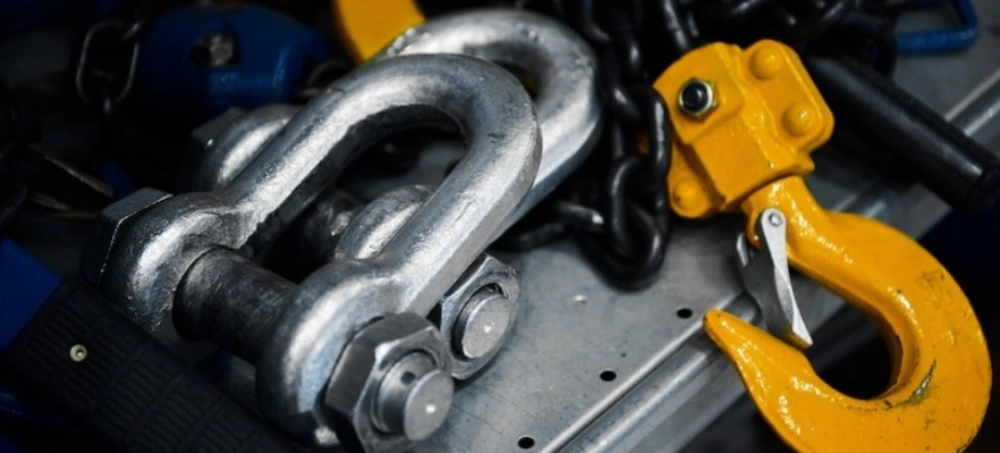
You need to choose the correct type of shackle for your specific job. This decision depends on several important factors:
Ensure the shackle’s working load limit matches or exceeds the maximum load you plan to lift or secure.
Evaluate the material. Stainless steel works best in marine or corrosive environments, while alloy steel suits heavy-duty lifting.
Select the pin type. Screw pin shackles are easy to use for temporary connections. Bolt-type pins offer extra security for long-term or vibration-prone setups.
When you select a shackle, always consider the angle of loading. Shackles are strongest when you align loads properly with the centerline. If you use shackles at an angle, the load capacity drops, which can be dangerous.
Powerful Machinery offers a wide range of certified shackles, including stainless steel shackles for marine use and G209 shackles for heavy lifting. These products help you meet strict safety standards in any environment.
Attaching and Securing
You must attach and secure shackles correctly to prevent accidents and ensure load stability. Follow these steps:
Inspect the shackle for any defects, such as rust or bending.
Select the right type and size of shackle for your load.
Open the shackle by unscrewing the pin or bolt.
Insert the rope, chain, or sling through the shackle body.
Reinsert and tighten the pin or bolt until it is fully engaged.
Test the shackle by applying a small load and checking for any bending or twisting.
Always follow recommended rigging techniques and manufacturer safety guidelines.
Wear proper personal protective equipment (PPE) during all rigging operations.
Store shackles in a dry, safe place when not in use.
Note: For off-road recovery, always double-check that the shackle is fully closed and the pin is secure before applying tension.
Powerful Machinery’s stainless steel screw pin D shackles make attachment quick and easy, especially when you need to work fast in off-road recovery or marine settings.
Safety Checks
After you attach and secure the shackle, you must perform safety checks to confirm everything is set up correctly. Skipping these checks can lead to serious consequences.
Safety Checks | Consequences of Skipping Checks |
|---|---|
Visual inspection of shackles before each use | Increased risk of accidents due to undetected damage |
Proper usage to avoid damage and wear | Potential for rigging failures, injuries, or fatalities |
Discard shackles with visible damage | Legal liability and financial losses |
Ensure load pins and retainers are intact | Damage to the load, equipment, and project delays |
Improper rigging can cause accidents, injuries, or even fatalities. Rigging failures may damage your load and equipment, leading to costly delays. Legal liability can arise if you skip safety checks and an accident occurs.
Alert: Never use shackles that show signs of wear, cracks, or missing markings. Always follow the manufacturer’s instructions for safe operation.
By following these steps, you learn how to use shackles safely and efficiently. Powerful Machinery’s certified products give you peace of mind, knowing you have reliable equipment for every job.
Safety and Best Practices
Never Exceed the Working Load Limit
You must always follow the safety rules when using shackles. The most important guideline is to never exceed the working load limit. The working load limit (WLL) is the maximum weight or force that shackles can safely handle during normal use.
Manufacturers determine the WLL by dividing the breaking strength by a safety factor.
For example, if a shackle has a breaking strength of 10,000 pounds and a safety factor of 5:1, the WLL is 2,000 pounds. You can find the WLL marked on every certified shackle. Exceeding this limit can cause the shackle to fail, leading to serious injury or death.
Always check the WLL before lifting and avoid shock loading, which can create forces much higher than the static load.
Rule | Description |
|---|---|
1 | Always respect the Working Load Limit (WLL) to prevent overloading. |
2 | Never side-load a shackle to avoid reducing its WLL. |
3 | Make proper sling and hardware connections to ensure safety. |
4 | Account for sling angles to calculate the correct tension on the shackle. |
5 | Never replace the original pin to maintain the integrity of the shackle. |
6 | Avoid extreme temperatures and chemical exposure that can weaken the shackle. |
Common Mistakes to Avoid
Many accidents happen because users ignore basic guidelines. You should inspect shackles before every use to check for wear or damage. Using the wrong size or type of shackle can lead to failure. Improper connections, such as attaching multiple shackles to a pin instead of the body, increase risk.
Side loading a shackle reduces its strength and can cause it to break. Neglecting regular inspections is another common mistake. Always use the right shackle for the job and follow all safety guidelines.
Tip: Remove any damaged shackles from service immediately. Never substitute the original pin with another object.
Maintenance Tips
Proper maintenance extends the life of your shackles and keeps your operations safe. You should regularly inspect for cracks, deformations, corrosion, and loose or damaged pins. Clean shackles after use, especially in harsh environments. Lubricate moving parts if needed.
Replace any shackle that shows signs of wear or damage. Regular maintenance, including cleaning and inspection, helps Powerful Machinery shackles last longer and perform reliably. Neglecting these steps can shorten the lifespan of your equipment and put safety at risk.
Regular care and inspection are key guidelines for safe and effective lifting.
Conclusion
To use shackles safely and effectively, you should:
Work with trained and qualified personnel.
Inspect all shackles and the environment before each lift.
Check that your load is balanced and stable.
Communicate clearly with your team.
Service Type | Inspection Interval |
|---|---|
Normal Service | Yearly |
Severe Service | Monthly to Quarterly |
Special Service | As recommended by experts |
Choosing certified shackles from trusted brands like Powerful Machinery ensures you meet safety standards and get reliable performance. Always inspect your gear, respect load limits, and use proper technique for every lift. Safe rigging starts with you.
FAQ
How do you choose the right shackle for your job?
You should match the shackle’s working load limit to your task. Check the environment and select stainless steel for marine or corrosive settings. Always use certified shackles for safety.
Can you use shackles to recover your stuck vehicle?
Yes, you can use shackles to recover your stuck vehicle. Make sure you select the correct size and type. Always inspect the shackle before use to prevent accidents during recovery.
What is essential UV recovery gear?
Essential UTV recovery gear includes shackles, recovery straps, gloves, and a winch. You should always carry these items when off-roading. This gear helps you handle unexpected situations safely.
How often should you inspect your shackles?
You should inspect shackles before every use. Look for cracks, corrosion, or bent pins. Remove any damaged shackles from service immediately to keep your lifting operations safe.
Can you use the same shackle for lifting and towing?
You can use some shackles for both lifting and towing if they meet the required load limits. Always check the manufacturer’s guidelines and never exceed the working load limit.

